An introduction to microplastics and microfibres.
Not-so-fun-fact number one:
Plastic doesn’t break down, it breaks up. It breaks up into smaller and smaller pieces, becoming what we now know as microplastics. Primary microplastics are 5mm in length or less, and include plastic pellets, microbeads (often found in skincare and scrubs) and microfibres from fabric. Secondary microplastics are made when larger pieces of plastic begin to degrade and break up. In the ocean, this is commonly from fishing nets, water bottles and shopping bags. The smaller a piece of plastic is, the more likely birds and fish are going to consume it and somewhere along that food chain, we end up eating these microplastics too. A study in the journal Environmental Science and Technology says “it's possible that humans could be consuming between 39,000 and 52,000 microplastic particles each year.” While it is currently unclear what the health risks are attached to this, certain types of plastic attract harmful bacteria or can become more toxic over time.
Not-so-fun-fact number two:
We have all heard that by 2050 there will be more plastic in the ocean than fish, but did you know that the majority of these plastics cannot be seen by the naked eye? It is easy to imagine that the great pacific garbage patch (the biggest of five huge garbage patches floating in the ocean) is a visible island of plastic waste, but in reality, as much as 92% of the object count in the GPGP is made up of microplastics.
Ready for my final not-so-fun-fact?
Our clothing is one of the largest contributors to microplastic waste. In fact, a report from the International Union for Conservation of Nature (IUCN) estimated that 35% of all primary microplastics in the oceans originate from machine-washed synthetic textiles. Every time we wash our clothes, they release millions of microfibres that flow directly into our water systems. Due to the size of these plastics most of them pass through vents and end up in our oceans. Last year, a test was conducted on synthetic clothing from four leading fashion brands to find out just how many fibres were lost in each wash. “This blouse from Zara – made of 100% polyester on the front and a blend of cotton and modal on the back – lost so many fibers per wash that it started “disintegrating” after only few washes. It lost an average of 307,6 mg of fibers per kg of laundry. Maria Westerbos, director and founder of the Plastic Soup Foundation, states: “This is what you call fast fashion. It disappears in front of your eyes.””

80 billion new pieces of clothing are being consumed every year, and approximately 70% of all new clothing is made from synthetics such as polyester and nylon. It’s time the fashion industry took plastic pollution seriously.
Thankfully, there are companies already committed to reducing their plastic waste and there are ways we can all do the same. In this article, we are discussing how we can reduce our impact on microplastic pollution and discovering ethical fashion brands that use natural fabrics and sustainable practices that we can trust.
How to minimise our impact: Choose natural and organic clothing:
The best place to start is with the clothing you wear. Minimise the loss of microplastics/ microfibres by wearing as fewer synthetic fabrics (e.g. nylon and polyester) as you can. Natural textiles such as linen, Tencel or hemp will completely biodegrade and don’t contain any microfibre plastics. Organic cotton is also a great choice as conventional cotton is grown using harmful pesticides and damages soil quality over time. When growing organic cotton, the crops are rotated which leads to healthier, nutrient rich soil that requires less water and irrigation.
Tencel is a fibre made from sustainably sourced wood pulp and is a form of Lyocell. It is renowned for being extremely soft and breathable. Tasi Travels uses Tencel as their main material as it is perfect for travellers seeking style and comfort, while being kind to the environment. View their collection here.
Linen is made from the flax plant and is one of the oldest textiles still used today. 70% of flax is grown in the EU where the conditions are best for plants that require rich soil and frequent rain. If grown in other areas that get less rain, more water is used in the manufacturing process which drains The Victoria and Albert museum published this video about the production of linen to support their Fashioned From Nature exhibit in 2018. The V and A explain “Linen is the original sustainable fibre – when grown in its ideal geographical zone, the cultivation of flax produces no waste. All parts of the flax plant are used: the long and short fibres and seeds are made into textiles, paper, varnish, oil, animal fodder and bio-materials. After the plants have been pulled (harvested), the root remnants fertilise and clean the soil, thereby improving the productivity of soil for 6 to 7 years. Growing flax requires no irrigation, no fertilisers and no herbicides and pesticides, and therefore does not pollute rivers or groundwater. Flax even retains 3.7 tons of CO2 per hectare per year.”
 A great brand you need to know about is Armedangels. This ethical brand comes from Europe and uses high quality natural textiles in their clothes including Tencel, organic linen and organic cotton. Plus Armed Angels use recycled plastic bottles in place of virgin synthetic fabric, which saves on energy for manufacturing and makes use of existing plastics instead of creating more. View their collection for women and for men here.
A great brand you need to know about is Armedangels. This ethical brand comes from Europe and uses high quality natural textiles in their clothes including Tencel, organic linen and organic cotton. Plus Armed Angels use recycled plastic bottles in place of virgin synthetic fabric, which saves on energy for manufacturing and makes use of existing plastics instead of creating more. View their collection for women and for men here.
While synthetic fibres may be best for the water, Luna and Soul are a fashion brand committed to reducing plastics in yoga and activewear. Their garments are 90% GOTS certified organic cotton and 10% Spandex (lyrca / elastane) and they even use use 100% biodegradable woven cotton for their clothing labels and natural rubber for their logo. Their clothing is light weight, soft and flexible, making it perfect for yoga, workouts and lounging around while still looking fabulous. View their collection here.
EarthPositive is another ethical brand that we trust. Not only to they use great natural materials including organic cotton and Tencel, but they are carbon neutral in their manufacturing too. EarthPositive apparel was made to demonstrate the highest possible environmental, social and ethical standards in the fashion industry. A single EarthPositive t-shirt saves around 7kg of CO2, and a hooded sweatshirt saves up to 28kgs of greenhouse gases! View their collection for men and women here.
There are also brands such as Tree Tribe who make leggings from upcycled materials. This helps to create high quality clothing as well as reduce plastic waste. Plus, Tree Tribe plants 10 trees for every purchase.
Knowing a few brands can be incredibly helpful when trying to shop ethically and sustainably, while finding items that match your style. That is why Velvety stocks a wide selection of styles that are Vegan, conscious and fair.

How to minimise our impact: Minimise the loss of microfibres in your clothing:
High quality clothing:
If you do wish to wear synthetic clothing, as most of us do for swimwear and activewear, you can still act to minimise your clothing’s impact by buying high quality garments. It has been shown that higher quality synthetic clothing and those with tighter weaves will shed far less microfibres, which also means they remain in good condition for longer and you get more use out of your clothing.
Wash less:
Your clothes are probably not as dirty as you think. Synthetic garments can be hung inside out to dry after a workout which reduces bacteria growth. Other items can get away with a hand wash or only need a wash in small areas like the underarms and are ready to be re-worn.
Cold wash:
Less microfibres are released when washing on cool, plus most of the time hot washes do more harm than good to your clothing, so turn down your machine and keep the planet and your clothing happy.
Catch the microfibres in your washing machine:
Have you heard of Guppy Friend? This is a bag specifically designed for use in your washing machine and allows you to trap microfibres before they enter our water pipes. The Guppy Friend comes in a generous size so you can fit all items containing synthetic fibres inside. The bag itself prevents most microfibres from breaking off, as does washing with cooler temperatures, but after a few washes you will notice a build-up of tiny fibres that you can brush into the bin, saving them from the ocean. While it is not the best solution, it is currently the best we have while scientists are working on other ways to stop microplastics from getting to the ocean. This is why minimising your overall use of synthetic clothing is key to minimising your impact. Thankfully, we have an amazing range of brands that can help you look great and feel fantastic.
While there is so perfect solution to our plastic problem just yet, we can all help by choosing to wear more natural clothing, and minimising the amount of microfibres are shed when washed. At Velvety, we make finding ethical and natural clothing easy, so you can shop with confidence.
SOURCES:
https://www.youtube.com/watch?v=LNDbINF6Vew
https://www.armedangels.de/en/materialien/#plastic
https://theoceancleanup.com/great-pacific-garbage-patch/
https://www.patagonia.com/synthetic-microfiber-pollution.html
About the author: Chloe is an ethical lifestyle writer and video maker known online as Be Kind Coco. She loves cats and a good cuppa and is on a mission to make ethical living easy.

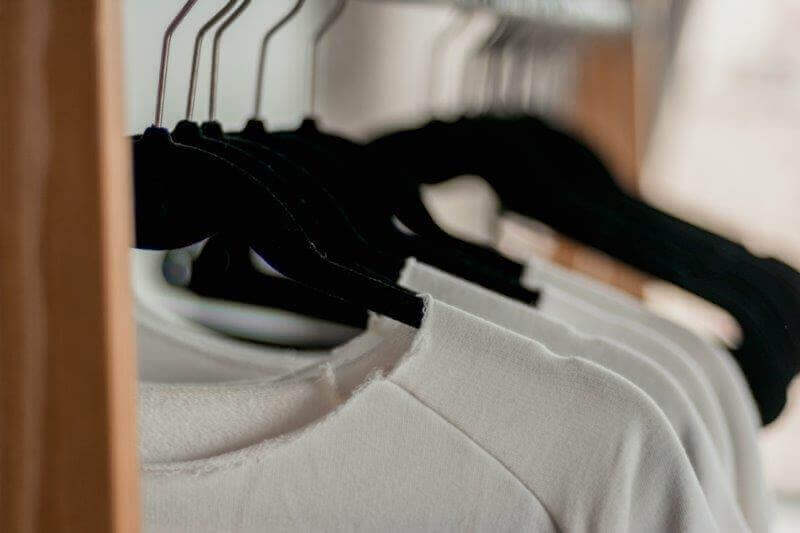

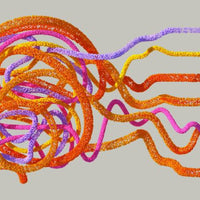
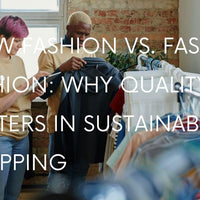
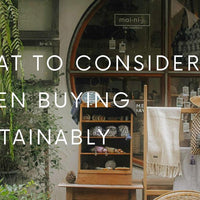
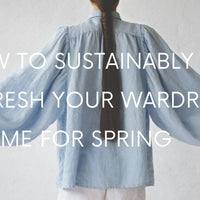

0 comments